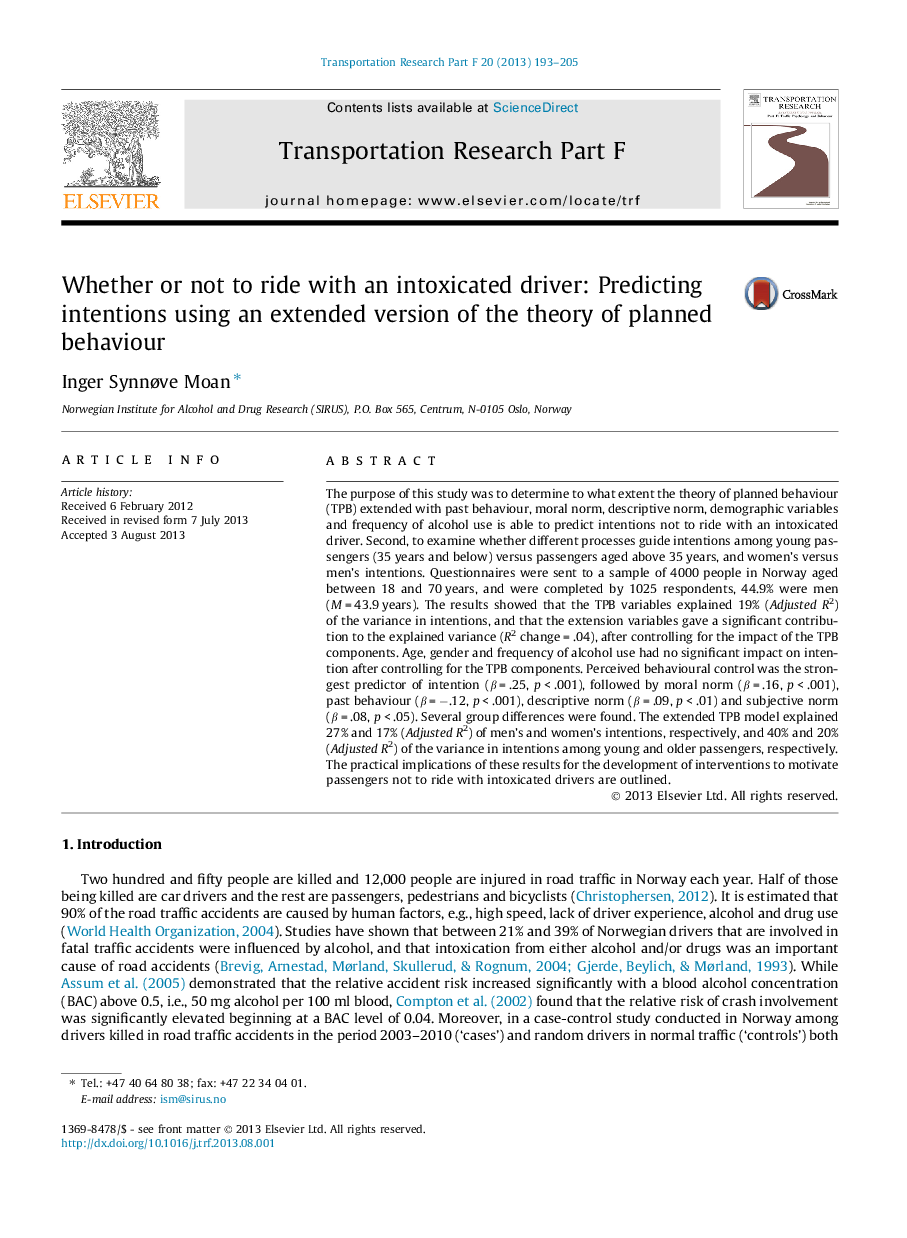| کد مقاله | کد نشریه | سال انتشار | مقاله انگلیسی | نسخه تمام متن |
|---|---|---|---|---|
| 897803 | 1472460 | 2013 | 13 صفحه PDF | دانلود رایگان |

• Predicting intentions not to ride with an intoxicated driver using an extended theory of planned behaviour.
• The model did a poor job in accounting for intentions in the sample as a whole.
• The model fit better among young male drivers than women and drivers above 35 years.
• Implications for interventions to encourage passengers not to ride with intoxicated drivers are discussed.
The purpose of this study was to determine to what extent the theory of planned behaviour (TPB) extended with past behaviour, moral norm, descriptive norm, demographic variables and frequency of alcohol use is able to predict intentions not to ride with an intoxicated driver. Second, to examine whether different processes guide intentions among young passengers (35 years and below) versus passengers aged above 35 years, and women’s versus men’s intentions. Questionnaires were sent to a sample of 4000 people in Norway aged between 18 and 70 years, and were completed by 1025 respondents, 44.9% were men (M = 43.9 years). The results showed that the TPB variables explained 19% (Adjusted R2) of the variance in intentions, and that the extension variables gave a significant contribution to the explained variance (R2 change = .04), after controlling for the impact of the TPB components. Age, gender and frequency of alcohol use had no significant impact on intention after controlling for the TPB components. Perceived behavioural control was the strongest predictor of intention (β = .25, p < .001), followed by moral norm (β = .16, p < .001), past behaviour (β = −.12, p < .001), descriptive norm (β = .09, p < .01) and subjective norm (β = .08, p < .05). Several group differences were found. The extended TPB model explained 27% and 17% (Adjusted R2) of men’s and women’s intentions, respectively, and 40% and 20% (Adjusted R2) of the variance in intentions among young and older passengers, respectively. The practical implications of these results for the development of interventions to motivate passengers not to ride with intoxicated drivers are outlined.
Journal: Transportation Research Part F: Traffic Psychology and Behaviour - Volume 20, September 2013, Pages 193–205